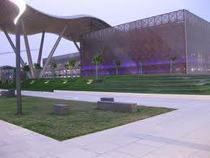 _Hydro, a global supplier of aluminium products, with activities in solar power and hydropower, is trying to expand its presence in Qatar, particularly in research and development, with an aim to help promote aluminium in the Middle East.
An integrated aluminium company with a global presence, Hydro, which forayed into Qatar Science & Technology Park (QSTP) with a 45 square-metre ‘novice’ office, signed a new contract to expand the space to 500 square metres.
Alongside Hydro’s strong involvement in the Qatalum aluminium plant that is now being constructed in Mesaieed, near to Doha, this development is described as a big step for the company’s research and development presence in Qatar.
Senior Vice President Tormod Bjork said, “The building industry in Qatar can benefit from the competence Hydro building system possesses”.
The sun, humidity, and the heat are intense in Qatar. This gives opportunities for Hydro as an inventor and producer of building systems solutions and for aluminium as a metal, Bjork said. He also pointed out that the Tornado Tower is the new project where the company supplied façade systems.
The Hydro official also observed that many of the buildings being constructed in Doha have not yet “seen the light” of utilising modern aluminium.
Bjork emphasised that the current market condition for aluminium has changed the ramp-up profile of Hydro at its facility at the QSTP.
“However, we are preparing for the next steps and we are now looking into establishing lab facilities and increasing our presence here”, Bjork added.
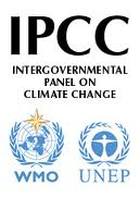 _According to a recent government report, the US might suffer effects of the abrupt climate change, which is sooner than few have guessed.
It contends that the seas could increase quickly if polar ice melting continuously outruns new projections and an ongoing drought in the US might be the start of drying in the region. Accredited by the US Climate Change Science Program, the report was written by experts from the Columbia University's Lamont-Doherty Earth Observatory, US Geological Survey, and some leading institutions.
Several scientists are lifting the possibility that catastrophic, abrupt switches in the natural systems might stress the rise of global temperatures. The report utilises studies, which is not available in the Intergovernmental Panel on Climate Change (IPCC). “This is the most up to date, as it includes research that came out after IPCC assembled its data”, said climatologist Edward Cook of Lamont-Doherty.
The researchers state that IPCC’s estimate of two feet of sea level increase by 2100 might be exceeded, because the recent data implies that the polar ice melting is increasing. There is evidence showing that the Antarctic ice cap is now losing an overall mass.
Cook states that the periodic drought in over 1,000 years is driven by natural cycles in the air circulation. “We have no smoking gun saying that humans are causing the current changes. But the past is a cautionary tale”, Cook state. “What this tells us is that the system has the ability to lock into periods of profound, long-lasting aridity.
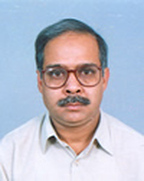 _VANIYAMBADI – On Monday, Department of Science and Technology (DST), New Delhi, Adviser A.Mukhopadhyay said that education and research in the area of science in particular has been passing across a bad stage owing to unavailability of proper facilities.
A national seminar on ‘Emerging Trends in Analytical Techniques’ as well as DST, Post Graduate sponsored lab and Research Department of Chemistry, Islamiah College, Vaniyambadi, A.Mukhopadhyay said availability of good students who could practise science as a career was also a matter of concern.
Furthermore, he said that if India hoped to stay at the forefront of science in the academic sector, it is important to strengthen its science and technology infrastructure.
Aside from non-availability of students to engage science, quality and uniformity of education was a matter of concern, though there were a total of 14,000 colleges and 300 universities in the country.
Through the DST, the central government adopted the task to strengthen the facilities for science education and research. About Rs.750 crore were spent by the DST in this endeavour to enhance postgraduate teaching and research. To encourage million young minds for research particularly in science education and research, DST is planning to launch another innovative programme.
According to the Regional Joint Director of Collegiate Education, Vellore Region, C.Velusamy, it is hard for the rural college staff to participate actively in research work because many facilities available in the city colleges were not accessible in the rural colleges.
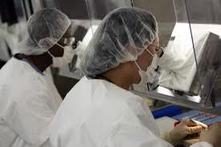 _A grant from the National Science Foundation was given to the College of Science and Technology at CMU to purchase technologically advanced testing equipments.
Daniel Chen, professor and chairperson for the industrial engineering technology college, together with Dru Wilson, a plastics technology professor, proposed the grant for the College to use.
Chen stated that the foundation had been receiving approximately 900 proposals, and had accepted about 200.
“It’s great for the university”, Wilson stated. “It promotes us and aids in student-based research”.
The $43,011 grant was equalised by the IET department for the college to purchase the Instron 5582, a machine used in testing the mechanical properties of different materials. The equipment could test the flexibility of materials by twisting, compressing, and bending them.
The testing equipment was being utilised in a small number of plastics laboratory classes. But students could use it for their research. They could conduct their tests and researches, instead of using computer simulated experiments.
Chen stated that the Instron was commonly used in industry.
“Most manufacturing facilities require the equipment”, said Wilson.
He said that most industries wanted to know the characteristics and properties of the materials they used when producing a new product. Wilson also stated that it would be important to select the right materials, when producing new products to determine if it would hold up under specific conditions.
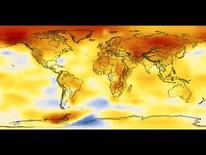 _For the past 12 months, global climate has been cooler compared to the previous years, but it is claimed that the world would still be warming due to the inevitable climate change.
“The global temperature is likely to rank around the 10th warmest year”, Director General of the World Meteorological Organisation Michael Jarraud, said.
Pertaining to 2008 as the warmest of all years for the past 12 years, Michael said, “The trend for warming is still very much there”.
From 2006 to 2007, the effects of both La Niña and El Niño – the related warming and cooling of temperature in Pacific sea – have already been felt across the globe. These natural phenomena have been blamed for the heavy flooding in Bolivia and the Horn of Africa, the prolonged drought in Australia, and a series of severe winter monsoons.
Michael Jarraud emphasised that both phenomena should not have another damaging effect on the climate and should be neutralised in 2009.
On the other hand, people were starting to be more concerned about the ice in the Arctic Sea, which had already dropped to its lowest level during its melting season. It has been noted that the dropping of the ice level is the main reason for numerous floods, heat waves, drought and storms – particularly the Cyclone Nargis, which destroyed Myanmar last May.
Although it is too early to conduct forecasts for 2009, according to Michael Jarraud, there would be a rise in temperature of 0.2% over the succeeding years.
|





 RSS Feed
RSS Feed